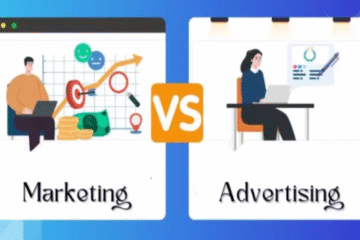Let’s be real for a second.
Most marketers freeze the moment a prospect says “I’m not interested,” “I don’t have the money,” or “I need to think about it.”
Their confidence evaporates. Their pitch loses power.
And the sale — poof — dies right there on the spot.
But here’s the truth no one wants to admit: objections aren’t rejection.
They’re buying signals in disguise.
Let me explain…
The Hidden Meaning Behind Every Objection
When a prospect objects, they’re not saying “No.”
They’re really saying:
“I don’t believe you yet.”
“I don’t trust you yet.”
“I don’t see the value yet.”
And that’s good news.
Because when you understand why they’re hesitating, you can do something about it.
You can turn that hesitation into hunger.
The sale doesn’t end when an objection comes up — that’s when it truly begins.
That’s when your real persuasive skill shows up — when you stop sounding like a salesperson and start sounding like a trusted advisor who knows what’s really going on in their head.
Step 1: Anticipate the Objections Before They’re Spoken
Before you write a single word of copy, ask yourself:
“Why wouldn’t someone buy this?”
List every objection you can think of — price, timing, skepticism, overwhelm, confusion — and address each one inside your message.
Ask yourself:
What fears do my prospects have about spending money here?
What’s their past experience with something similar?
What hidden risk are they trying to avoid?
Then bake your answers right into your copy:
“You might be wondering if this will really work for you — especially if you’ve tried other programs that didn’t deliver…”
Boom.
You’ve entered the conversation already happening in their mind.
And suddenly, you’re not the pushy marketer anymore — you’re the voice of reason.
Step 2: Reframe the Risk
Most objections boil down to one thing: fear of loss.
People fear losing money, losing face, or losing time.
So, flip the script.
Make the cost of not acting greater than the cost of buying.
“Sure, you could wait — but how many more months will you waste struggling with the same problem? How much revenue will you lose while your competitors pull ahead?”
You’re not just selling a product.
You’re selling relief from pain, frustration, or uncertainty.
Don’t sell what it is.
Sell what life looks like when the pain stops.
Step 3: Use Proof Like a Sledgehammer
When someone objects, they’re basically saying:
“Prove it.”
So, prove it — relentlessly.
Use testimonials that sound real, not polished.
Show screenshots, case studies, before-and-afters.
Reveal your process, not just your promise.
Stack your proof until resistance collapses under the weight of credibility.
Because when proof hits hard enough, logic and emotion finally shake hands.
That’s when trust is built.
Step 4: Make It Safe to Say Yes
Even the most convinced buyer still wants reassurance.
So don’t make them “take a chance.”
Make them feel protected.
Offer a strong guarantee:
“Try it for 60 days. If it doesn’t work for you — even a little — I’ll personally refund every penny. No hard feelings.”
That one paragraph can double your conversions overnight.
Because it removes the last mental barrier between wanting and buying.
In other words — make it effortless to say yes.
Final Thought: Objections Are Opportunities
Objections are your roadmap to the sale.
They show you exactly where your prospect’s pain points live — and where your copy must go to heal them.
So don’t avoid objections.
Hunt them down.
Expose them.
Answer them with empathy, logic, proof, and vision.
Because when you handle objections the right way, your reader stops resisting…and starts realizing.
That what you’re offering isn’t a cost — it’s a path to the life they actually want.
And that’s when the sale becomes inevitable.
Call to Action:
If you’d like help crafting copy that crushes objections and converts skeptics into believers, let’s talk.




